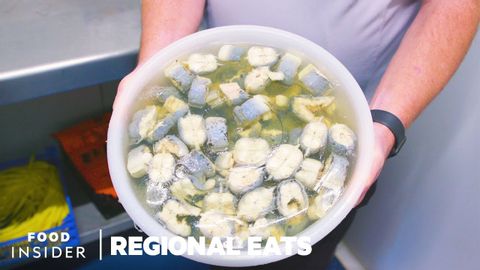鰻魚膠是如何在東倫敦製作的 | 地區美食 (How Jellied Eels Are Made In East London | Regional Eats)
 沒有此條件下的單字
沒有此條件下的單字US /ˈprɑsˌɛs, ˈproˌsɛs/
・
UK /prə'ses/
- v.t.用電腦處理(資料);(依照規定程序)處理;處理;流程;加工;理解
- n. (c./u.)(規定的)程序;過程;進程;方法;法律程序;進程
US /ˈslaɪtli/
・
UK /ˈslaɪtli/
- adj.紮實的;可信賴的;固體的;堅固的;實心的;無空隙的;純的;無雜質的
- n.固體
